I Took a Campervan Trip Around Oregon — Here's How You Can, Too
Oregon's coast, desert, and mountains are best explored in a campervan.
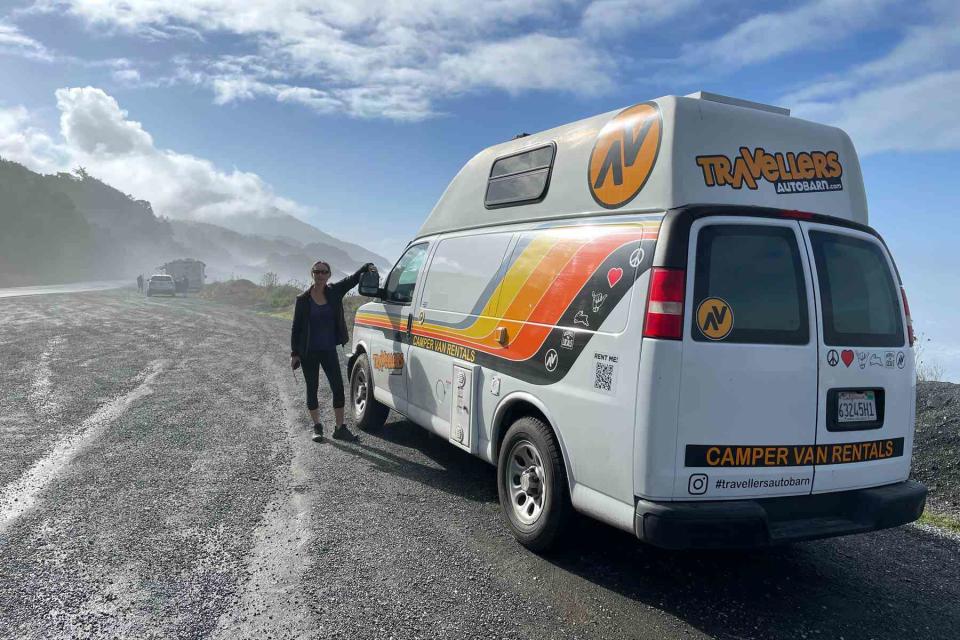
Jamie Carter
Oregon is hard to pin down. You can stare at the Milky Way from the high desert one night and be eating clam chowder in thick fog by lunchtime. Or, be on top of a volcano the morning after sampling America’s best craft beers.
Covered in mountains, valleys, deserts, and forests, Oregon is all about enjoying the outdoors and refueling afterward, making it perfect for exploring by campervan or RV. That’s what my partner and I did in September, embarking on a long-planned campervan road trip up through the Beaver State’s Cascade Range, out to its deserts, and back down the coastal Highway 101. Here's what we learned along the way.
Choosing and Running a Campervan
It wasn't easy selecting our home base for two weeks. After all, we were going to spend many hours driving, cooking, and sleeping in it. We opted to rent a Kuga Campervan from Travellers Autobarn in San Francisco, which cost about $2,000 for two weeks. It came with everything we needed, from a small refrigerator to plenty of headroom while cooking, though the van itself was old and slow. Even on the highway, we rarely got above 55 mph, which rendered our driving time calculations overoptimistic.
One thing we loved about renting from a big company was the depot’s "free shelf," where fellow travelers leave unused food and supplies. It's a great way to save money and recycle. We also found that it was best to fill up in towns and cities, where gas prices were considerably lower than on the coast and in remote areas.
Exploring Beyond the Pacific Coast
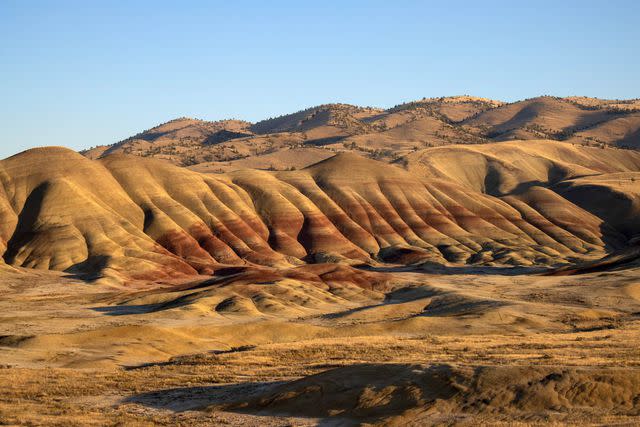
Jamie Carter
Driving north or south on Highway 101 means covering about 400 miles and traveling past dramatic capes and rivers, always with the Pacific Ocean on one side and the forested range of mountains on the other. It’s at its best in the Samuel H. Boardman State Scenic Corridor in the south. Inland, in the north, is the Willamette Valley and its vineyards, but what really defined our journey was the Cascade Range — iconic snow-capped peaks lined up in a vast volcanic landscape.
Traveling further east, we reached the Columbia Plateau, a high desert region whose star attraction is the Painted Hills, a spectacular hillside of red, yellow, and gold stripes — the remains of ancient volcanic ash dumps. We didn't reach it until three hours before sunset, but there was a reason for that: Having read that the colorful stratifications in the soil look their best during golden hour, we timed our visit specifically, and it was a great decision.
Where to Stay
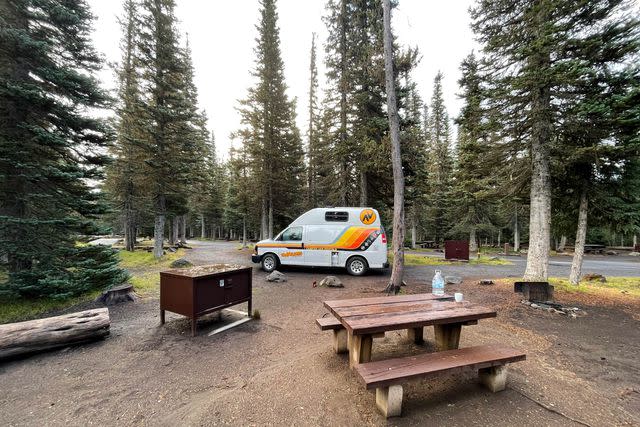
Jamie Carter
Since we were in a self-contained campervan, and on a tight schedule, we needed simple campgrounds that could be booked ahead of time, preferably with a beautiful natural setting. That was no problem in Oregon. We mainly chose Oregon state parks, the best being Cape Lookout State Park and Carl G. Washburne Memorial State Park on the coast and Oxbow Regional Park near the Columbia River. Each one provided campfire rings, privacy, and an incredible river, beach, or forest view. We booked them months in advance for an $8 reservation fee. Tip: Print out your reservation confirmation and leave it on your dashboard, as it doubles as a day-use permit in many state parks you may visit during the day, saving you a $5 fee each time.
The remote Painted Hills region lacks campgrounds, but we luckily found Priest Hole Recreation Site a few miles north on the John Day River. It was primitive — just a pit toilet and warning signs about rattlesnakes — but there were no fees. And on top of absolute isolation, we had incredible clear, dark skies.
We also could not resist Bend and its many brewpubs. We stayed in The Camp, a relaxed and clean boutique RV resort, complete with a communal fire pit and BBQ grills. It’s a 15-minutes walk from downtown Bend and the Bend Brewing Company’s beautiful beer garden.
Visiting Crater Lake National Park
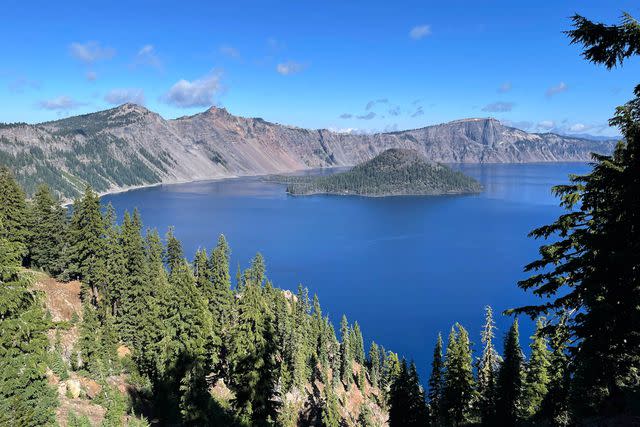
Jamie Carter
Crater Lake, situated in the caldera of an ancient volcano, is the deepest lake in the U.S. — and a major draw of Oregon. During our visit, however, it was cloudy and rainy, which didn't make for good photos on the 33-mile Rim Drive (though we loved the one-hour round-trip hike up the Watchman Peak Trail for views of the lake’s Wizard Island). Mazama Campground's Annie Creek Restaurant served takeout pizza, which was a treat, and we even got a beautiful, clear morning as we departed.
If you’re looking for an excuse to visit Crater Lake National Park, a rare “Ring of Fire” solar eclipse will be visible in the region on Oct. 14, 2023, but you’ll need to book well in advance for that.
Hiking, Kayaking, and Horseback Riding
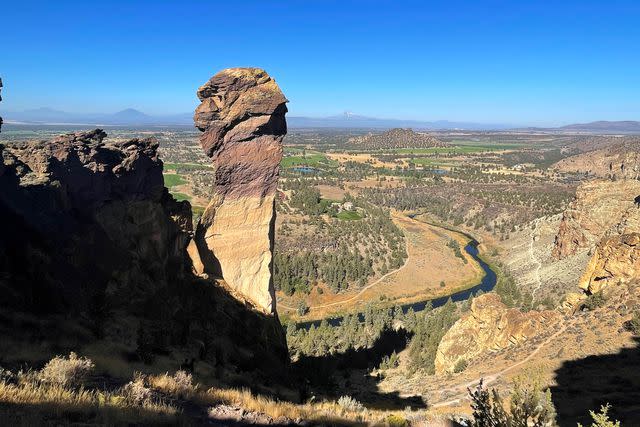
Jamie Carter
To break up the long drives, we went horseback riding on the beach from Bandon Beach Riding Stables, hiked the coastal Neah-Kah-Nie Mountain Trail and Misery Ridge at Smith Rock State Park (the perfect place to see all the iconic peaks of the Cascade Range), kayaked Paulina Lake with Wanderlust Tours, and drove the campervan up Lava Butte, a cinder cone right alongside Highway 97. We also watched wild Roosevelt elk at Dean Creek Elk Viewing Area and had some luck in Depoe Bay, spotting three huge gray whales just offshore while standing beside the closed-for-the-season OPRD Whale Watching Center.
Where to Find Oregon’s Best Seafood
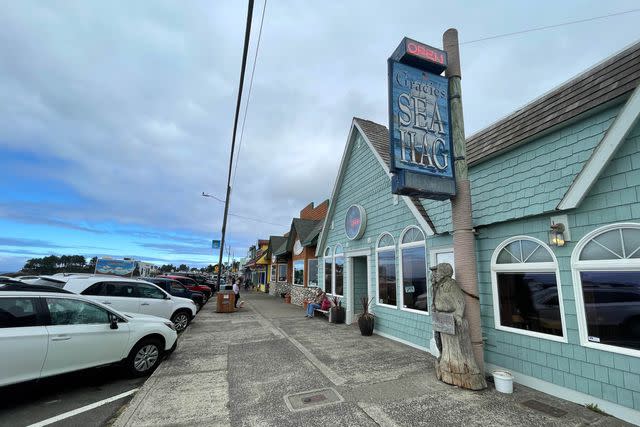
Jamie Carter
Fresh seafood was a major reason we spent time on Oregon's Pacific coast. There are dozens of restaurants, cafes, and kiosks to sample the local salmon, much of which is fresh from the Columbia River. Most of these establishments served oysters and a warming cup of clam chowder to take back to camp. We started with a fish basket from Tom's Fish & Chips in Cannon Beach (where you can also explore one of the best beaches in Oregon and its towering Haystack Rock). Our favorite was Gracie's Sea Hag in Depoe Bay, which served Oregon Dungeness crab, baskets of scallops, and Yaquina Bay oysters. However, the gastronomic highlight was buying fresh coho salmon filets from the Old Oregon Smokehouse opposite the famous Tillamook cheese factory to cook over an open fire back at camp.
Over 14 days and 10 campgrounds, we covered 2,000 miles under sunshine, cloud, fog, and rain. Did we see everything in Oregon? Absolutely not — and sometimes it was slow going — but with Crater Lake, the Painted Hills, and the Pacific coast as anchors in our itinerary, we drove, hiked, paddled, and ate our way around one of the most varied and spectacular states in the U.S. All we have now are the memories and a vast pile of gas receipts. Oh, and a slight addiction to clam chowder.
For more Travel & Leisure news, make sure to sign up for our newsletter!
Read the original article on Travel & Leisure.

